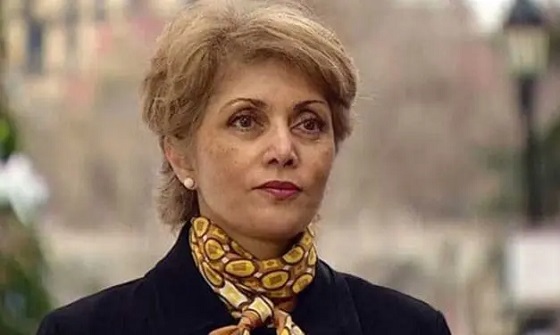Uncategorized
Indian island police struggle to get body of American

NEW DELHI — Indian authorities were struggling Thursday to figure out how to recover the body of an American killed after wading ashore on an isolated island cut off from the modern world.
John Allen Chau was killed last week by North Sentinel islanders who apparently shot him with arrows and then buried his body on the beach, police say.
But even officials don’t travel to North Sentinel, where people live as their ancestors did thousands of years ago, and where outsiders are seen with suspicion and attacked.
“It’s a difficult proposition,” said Dependera Pathak, director-general of police on India’s Andaman and Nicobar Islands, where North Sentinel is located. “We have to see what is possible, taking utmost care of the sensitivity of the group and the legal requirements.”
Police are consulting anthropologists, tribal welfare experts and scholars to figure out a way to recover the body, he said.
While visits to the island are heavily restricted, Chau paid fishermen last week to take him near North Sentinel, using a kayak to paddle to shore and bringing gifts including a football and fish.
It was “a foolish adventure,” said P.C. Joshi, an anthropology professor at Delhi University who has studied the islands. “He invited that aggression.”
Joshi noted that the visit not only risked Chau’s life, but also the lives of islanders who have little resistance to many diseases.
“They are not immune to anything. A simple thing like flu can kill them,” he said.
On his first day Chau interacted with some tribesmen — who survive by hunting, fishing and collecting wild plants — until they became angry and shot an arrow at him. The 26-year-old self-styled adventurer and Christian missionary then swam back to the fishermen’s boat waiting at a safe distance.
That night, he wrote about his visit and left his notes with the fishermen. He returned to North Sentinel the next day, Nov. 16.
What happened then isn’t known, but on the morning of the following day, the fishermen watched from the boat as tribesmen dragged Chau’s body along the beach and buried his remains.
Pathak said seven people have been arrested for helping Chau, including five fishermen, a friend of Chau’s and a local tourist guide.
Chau was apparently shot and killed by arrows, but the cause of death can’t be confirmed until his body is recovered, Pathak said.
In an Instagram post, his family said it was mourning him as a “beloved son, brother, uncle and best friend to us.” The family also said it forgave his killers and called for the release of those who assisted him in his quest to reach the island.
“He ventured out on his own free will and his local contacts need not be persecuted for his own actions,” the family said.
Authorities say Chau arrived in the area on Oct. 16 and stayed on another island while he prepared to travel to North Sentinel. It was not his first time in the region: he had visited the Andaman islands in 2015 and 2016.
With help from a friend, Chau hired fishermen for $325 to take him there on a boat, Pathak said.
After the fishermen realized Chau had been killed, they left for Port Blair, the capital of the island chain, where they broke the news to Chau’s friend, who in turn notified his family, Pathak said.
Police surveyed the island by air Tuesday, and a team of police and forest department officials used a coast guard boat to travel there Wednesday. Another trip was planned Thursday.
India has a very hands-off approach to the island’s people. Tribespeople killed two Indian fishermen in 2006 when their boat broke loose and drifted onto the shore, but Indian media reports say officials did not investigate or prosecute anyone in the deaths.
India recently changed some of its rules on visiting isolated regions in the Andamans. While special permits are required, scholars say visits are now theoretically allowed in some parts of the Andamans where they used to be entirely forbidden, including North Sentinel. Chau had no permit, police said.
Chau had wanted ever since high school to go to North Sentinel to share Christianity with the indigenous people, said Mat Staver, founder and chairman of Covenant Journey, a program that takes college students on tours of Israel to affirm their Christian faith. Chau went through that program in 2015.
“He didn’t go there for just adventure. I have no question it was to bring the gospel of Jesus to them,” Staver said.
Staver said Chau’s last notes to his family on Nov. 16 told them that they might think he was crazy but that he felt it was worth it and asked that they not be angry if he was killed.
Before attending Oral Roberts University, Chau had lived in southwestern Washington state and went to Vancouver Christian High School. Phone messages left with relatives were not immediately returned Wednesday.
___
Associated Press writers Ashok Sharma in New Delhi, Gene Johnson and Phuong Le in Seattle, and Gillian Flaccus in Portland, Oregon, contributed to this report.
Tim Sullivan, The Associated Press
Uncategorized
Trump Admin Establishing Council To Make Buildings Beautiful Again


From the Daily Caller News Foundation
By Jason Hopkins
The Trump administration is creating a first-of-its-kind task force aimed at ushering in a new “Golden Age” of beautiful infrastructure across the U.S.
The Department of Transportation (DOT) will announce the establishment of the Beautifying Transportation Infrastructure Council (BTIC) on Thursday, the Daily Caller News Foundation exclusively learned. The BTIC seeks to advise Transportation Secretary Sean Duffy on design and policy ideas for key infrastructure projects, including highways, bridges and transit hubs.
“What happened to our country’s proud tradition of building great, big, beautiful things?” Duffy said in a statement shared with the DCNF. “It’s time the design for America’s latest infrastructure projects reflects our nation’s strength, pride, and promise.”
“We’re engaging the best and brightest minds in architectural design and engineering to make beautiful structures that move you and bring about a new Golden Age of Transportation,” Duffy continued.
Mini scoop – here is the DOT’s rollout of its Beautifying Transportation Infrastructure Council, which will be tasked with making our buildings beautiful again. pic.twitter.com/
9iV2xSxdJM — Jason Hopkins (@jasonhopkinsdc) October 23, 2025
The DOT is encouraging nominations of the country’s best architects, urban planners, artists and others to serve on the council, according to the department. While ensuring that efficiency and safety remain a top priority, the BTIC will provide guidance on projects that “enhance” public areas and develop aesthetic performance metrics.
The new council aligns with an executive order signed by President Donald Trump in August 2025 regarding infrastructure. The “Making Federal Architecture Beautiful Again” order calls for federal public buildings in the country to “respect regional architectural heritage” and aims to prevent federal construction projects from using modernist and brutalist architecture styles, instead returning to a classical style.
“The Founders, in line with great societies before them, attached great importance to Federal civic architecture,” Trump’s order stated. “They wanted America’s public buildings to inspire the American people and encourage civic virtue.”
“President George Washington and Secretary of State Thomas Jefferson consciously modeled the most important buildings in Washington, D.C., on the classical architecture of ancient Athens and Rome,” the order continued. “Because of their proven ability to meet these requirements, classical and traditional architecture are preferred modes of architectural design.”
The DOT invested millions in major infrastructure projects since Trump’s return to the White House. Duffy announced in August a $43 million transformation initiative of the New York Penn Station in New York City and in September unveiledmajor progress in the rehabilitation and modernization of Washington Union Station in Washington, D.C.
The BTIC will comprise up to 11 members who will serve two-year terms, with the chance to be reappointed, according to the DOT. The task force will meet biannually. The deadline for nominations will end Nov. 21.
Uncategorized
New report warns WHO health rules erode Canada’s democracy and Charter rights

The Justice Centre for Constitutional Freedoms has released a new report titled Canada’s Surrender of Sovereignty: New WHO health regulations undermine Canadian democracy and Charter freedoms. Authored by Nigel Hannaford, a veteran journalist and researcher, the report warns that Canada’s acceptance of the World Health Organization’s (WHO) revised International Health Regulations (IHR) represents a serious erosion of national independence and democratic accountability.
The IHR amendments, which took effect on September 19, 2025, authorize the WHO Director-General to declare global “health emergencies” that could require Canada to follow directives from bureaucrats in Geneva, bypassing the House of Commons and the will of Canadian voters.
The WHO regards these regulations as “binding,” despite having no ability or legal authority to impose such regulations. Even so, Canada is opting to accept the regulations as binding.
By accepting the WHO’s revised IHR, the report explains, Canada has relinquished its own control over future health crises and instead has agreed to let the WHO determine when a “pandemic emergency” exists and what Canada must do to respond to it, after which Canada must report back to the WHO.
In fact, under these International Health Regulations, the WHO could demand countries like Canada impose stringent freedom-violating health policies, such as lockdowns, vaccine mandates, or travel restrictions without debate, evidence review, or public accountability, the report explains.
Once the WHO declares a “Pandemic Emergency,” member states are obligated to implement such emergency measures “without delay” for a minimum of three months.
Importantly, following these WHO directives would undermine government accountability as politicians may hide behind international “commitments” to justify their actions as “simply following international rules,” the report warns.
Canada should instead withdraw from the revised IHR, following the example of countries like Germany, Austria, Italy, Czech Republic, and the United States. The report recommends continued international cooperation without surrendering control over domestic health policies.
Constitutional lawyer Allison Pejovic said, “[b]y treating WHO edicts as binding, the federal government has effectively placed Canadian sovereignty on loan to an unelected international body.”
“Such directives, if enforced, would likely violate Canadians’ Charter rights and freedoms,” she added.
Mr. Hannaford agreed, saying, “Canada’s health policies must be made in Canada. No free and democratic nation should outsource its emergency powers to unelected bureaucrats in Geneva.”
The Justice Centre urges Canadians to contact their Members of Parliament and demand they support withdrawing from the revised IHR to restore Canadian sovereignty and reject blind compliance with WHO directives.
-

 Justice2 days ago
Justice2 days agoCarney government lets Supreme Court decision stand despite outrage over child porn ruling
-

 Daily Caller2 days ago
Daily Caller2 days agoUN Chief Rages Against Dying Of Climate Alarm Light
-

 Business2 days ago
Business2 days agoCarney’s budget spares tax status of Canadian churches, pro-life groups after backlash
-

 COVID-192 days ago
COVID-192 days agoFreedom Convoy leader Tamara Lich to appeal her recent conviction
-

 espionage1 day ago
espionage1 day agoU.S. Charges Three More Chinese Scholars in Wuhan Bio-Smuggling Case, Citing Pattern of Foreign Exploitation in American Research Labs
-

 Business1 day ago
Business1 day agoCarney budget continues misguided ‘Build Canada Homes’ approach
-

 Business2 days ago
Business2 days agoU.S. Supreme Court frosty on Trump’s tariff power as world watches
-

 Business1 day ago
Business1 day agoCarney budget doubles down on Trudeau-era policies










